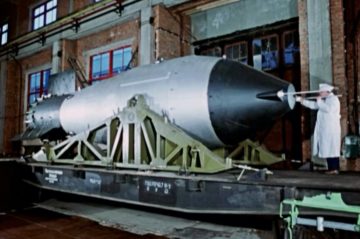Jennifer Ouellette in Ars Technica:
 The detonation of the first nuclear bombs over Hiroshima and Nagasaki in August 1945 is seared into our collective memory, and the world has been haunted by the prospect of a devastating nuclear apocalypse ever since. Less well-known but equally significant from a nuclear arms race standpoint was the Soviet Union’s successful detonation of a hydrogen “superbomb” in the wee hours of October 30, 1961.
The detonation of the first nuclear bombs over Hiroshima and Nagasaki in August 1945 is seared into our collective memory, and the world has been haunted by the prospect of a devastating nuclear apocalypse ever since. Less well-known but equally significant from a nuclear arms race standpoint was the Soviet Union’s successful detonation of a hydrogen “superbomb” in the wee hours of October 30, 1961.
Dubbed “Tsar Bomba” (loosely translated, “Emperor of Bombs”), it was the size of a small school bus—it wouldn’t even fit inside a bomber and had to be slung below the belly of the plane. The 60,000-pound (27 metric tons) test bomb’s explosive yield was 50 million tons (50 megatons) of TNT, although the design had a maximum explosive yield of 100 million tons (100 megatons).
More here.
